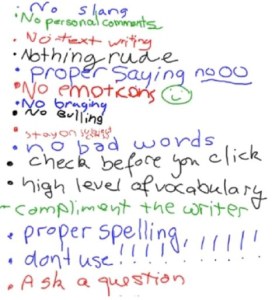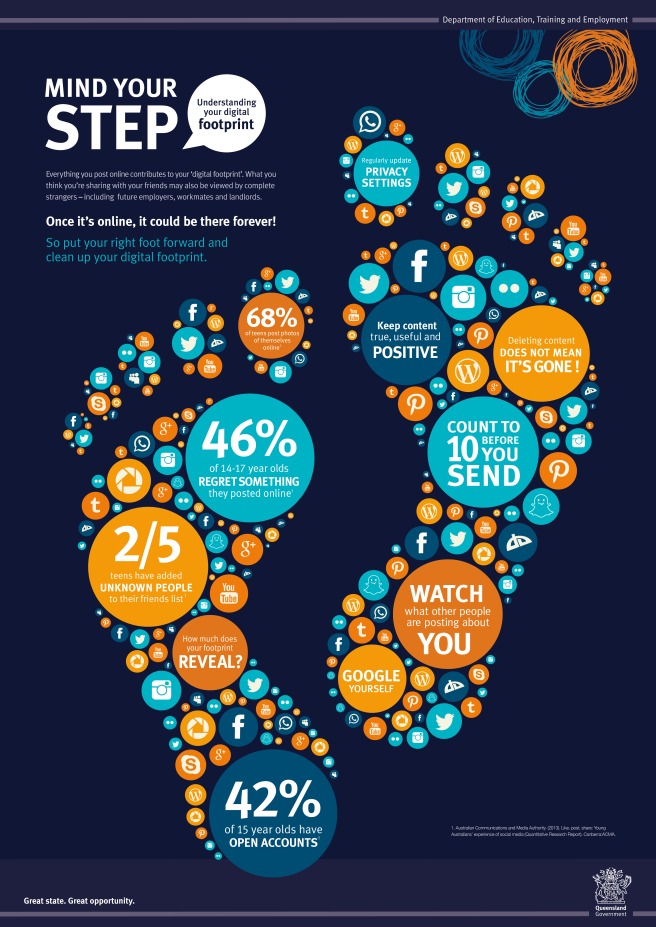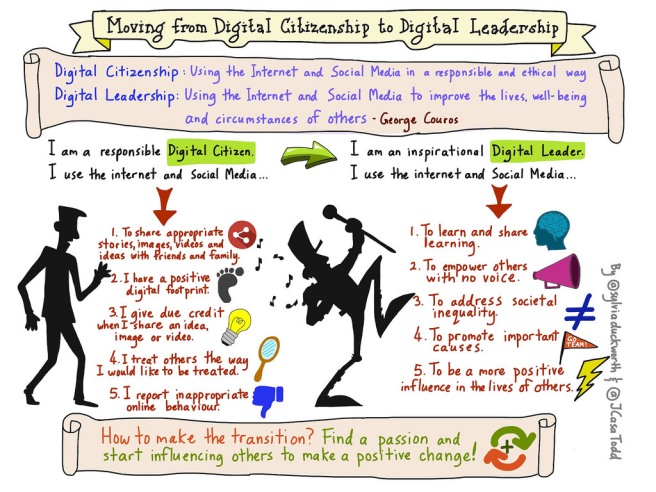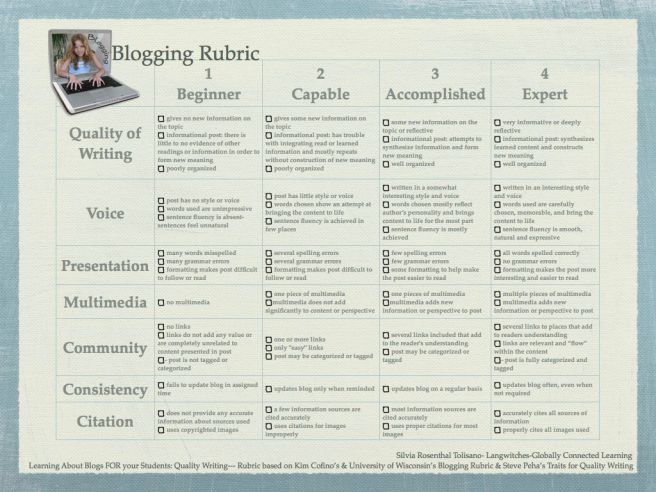We have come a long ways in a short time learning about digital citizenship, networking learning and how to better use social medial (specifically blogging) as a learning tool to engage with others and teach one another.
Starting today, your goal is to reflect on what you have learned as I will be (aka Mrs. Bernard) interviewing you in groups (3-4) to gain insight into what you think about blogging and digital networked learning. Start thinking about what you would say to these questions:
- Give me an example of something you really liked about blogging?
- What did you find most difficult about blogging?
- What was the biggest thing you learned through the whole digital learning project?
- Could blogging be useful in other classes? Which classes and how?
- What would you change to make blogging or networked learning better?
In between interviews you will be completing your final posts. Do not forget to refresh your memory on what is required of you by checking the rubric. Your final posts should demonstrate ALL of the rubric categories. Some of you have some homework ahead of you to get caught up an ensure you have an adequate number of posts and that they have all the requirements.
Make your last bogs STELLAR!
You will need one of your phones/ group. Mrs. Bernard will prompt you with the questions as you either audio record or video record your group. Don’t feel your recording needs to be perfect. Think about the questions for a few minutes and then hit record and she will read the questions to you and you can answer. No need to edit your recording- it is okay if it is not perfect. It should take about 4-5 minutes/ group and each question does NOT need to be answered by each person. All should participate at some point. Email your audio or video to Mr. Bromm’s school email address when you are done. Do NOT delete the recording until I get back just incase it does not send. I can’t wait to hear your thoughts!





